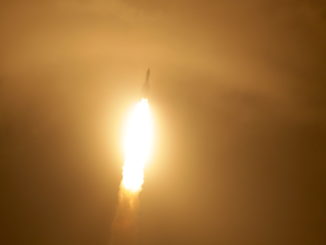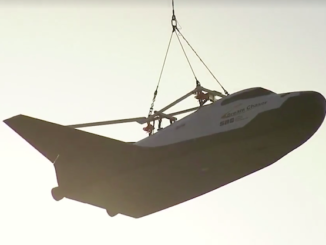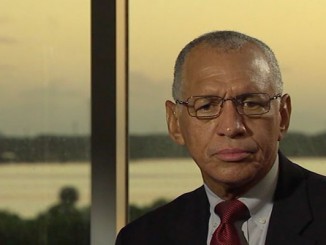EDITOR’S NOTE: Updated May 10 with NASA statement.
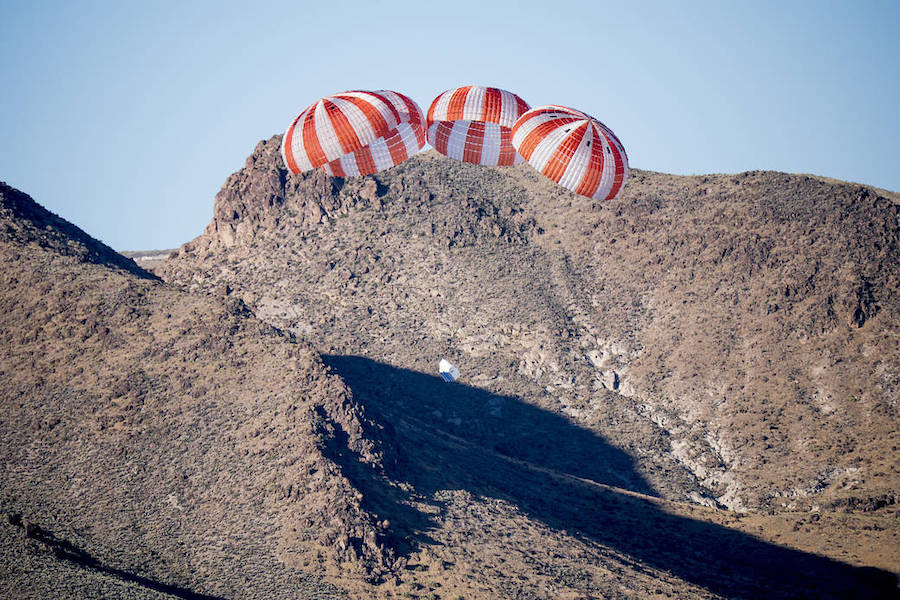
A malfunction during a drop test over Nevada last month for SpaceX’s Crew Dragon program has engineers re-examining the crew capsule’s parachutes, and Boeing has also encountered parachute failures during testing for its commercial crew capsule, a senior NASA official confirmed Wednesday.
The SpaceX parachute test failure occurred the same month as the explosion of a Crew Dragon spacecraft during a ground test at Cape Canaveral. The parachute drop test over Delamar Dry Lake in Nevada last month did not involve a Crew Dragon capsule, but used a simple metal test sled.
“It failed,” said Bill Gerstenmaier, associate administrator of NASA’s human exploration and operations directorate. “The parachutes did not work as designed.”
The parachutes did not fully open, sources said, and the test sled impacted the ground at a higher-than-expected velocity. Gerstenmaier said the sled was damaged upon impact. The advanced development test was intended to measure loads within each parachute canopy, according to an industry source.
No one was hurt in the test accident.
“It was one single-out test for this parachute,” Gerstenmaier said Wednesday in a hearing before the House Committee on Science, Space and Technology’s subcommittee on space and aeronautics. “So typically, that test would involve four parachutes, one was proactively failed ahead of time and the three remaining chutes did not operate properly.”
Gerstenmaier was asked about the outcome of the SpaceX parachute test by Rep. Mo Brooks, R-Alabama, whose district includes Huntsville and Decatur, home of NASA’s Marshall Space Flight Center and the rocket factory for United Launch Alliance, a 50-50 joint venture between Boeing and Lockheed Martin, and a chief rival of SpaceX.
The parachute test failure was not publicized by NASA or SpaceX before Wednesday’s congressional hearing.
“The good thing on the test was we had instrumented lines going up to the parachutes, so we know exactly what the loads were in the system,” Gerstenmaier said. “But we still need to understand whether it was a test set up configuration coming out of the aircraft or if there was something associated with the packing of the parachutes, the rigging, all of that. This is part of the learning process. By these failures, we’re going to learn the data and information to end up with a safe design for our crews. So I don’t see this as a negative, this is why we test, this is why we want to push things.”
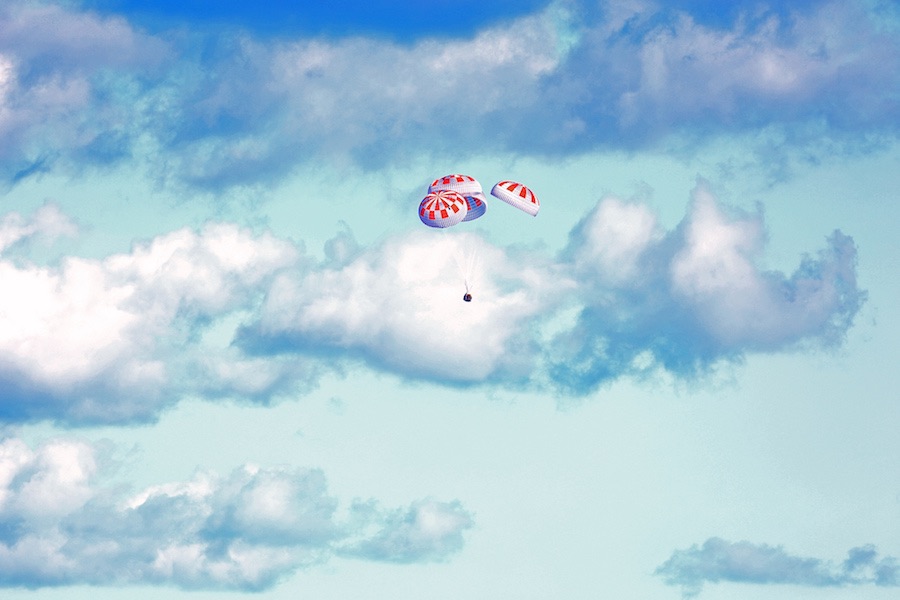
Engineers are investigating whether the parachute malfunction was caused by a problem with the chutes themselves, or as a consequence from the way the test was conducted.
“The test was not satisfactory, we did not get the results we wanted,” Gerstenmaier said. “But we learned some information that’s going to affect potentially future parachute designs. The other thing we need to understand (are the) test-unique circumstances. Was it driven by an actual design problem in the hardware, or was it driven by the set-up of the test or the particular equipment that was used during the test?”
SpaceX has completed 19 tests of the Crew Dragon’s parachute system to date, with a number of additional tests planned before astronauts fly on the spaceship. SpaceX had successfully performed five “parachute-out” tests, in which one of the chutes was deliberately disabled, before last month’s test accident, according to an industry source.
NASA officials have long identified parachutes as a concern for SpaceX and Boeing crew capsules, which are in the final stages of development before they carry astronauts into orbit for the first time. After completing their test programs, the SpaceX and Boeing capsules will begin ferrying astronauts to and from the International Space Station, ending NASA’s sole reliance on Russian Soyuz spacecraft for crew transportation.
A SpaceX Dragon cargo capsule suffered a parachute anomaly during a return from the International Space Station last year, but recovery crews retrieved the supply ship from the Pacific Ocean as intended.
SpaceX’s Dragon cargo ship uses the same main parachutes as the Crew Dragon, also known as Dragon 2. But the heavier Crew Dragon, which is a significantly different spacecraft than the cargo Dragon variant, requires four main parachutes for to slow down for splashdown in the ocean, not the three main chutes used on the currently-flying cargo freighter, sometimes known as Dragon 1.
The Crew Dragon’s first test flight in space in early March was successful, and the capsule’s parachutes functioned as designed after a six-day unpiloted mission to the space station. The spacecraft that flew to the station in March was destroyed April 20 during an accident at Cape Canaveral, which occurred as the capsule’s SuperDraco abort engines were activated for a hold-down firing on a test stand.
Before the April 20 accident, SpaceX aimed to re-fly the Crew Dragon spacecraft on an in-flight abort test in July. Officials hoped to launch a two-man team of NASA astronauts — Bob Behnken and Doug Hurley — on the next Crew Dragon spacecraft to the space station in late September or early October.
SpaceX and NASA officials have not indicated how last month’s hotfire test mishap, or the parachute failure, might impact the schedule for the Crew Dragon’s first flight with astronauts on-board.
Boeing’s CST-100 Starliner crew capsule, which will parachute to ground landings in the Western United States, is set for its first unpiloted test flight to the space station in August, followed by a demonstration mission with three astronauts on-board as soon as November. The Starliner missions will launch on ULA’s Atlas 5 rocket, while SpaceX uses its own Falcon 9 launcher for Crew Dragon missions.
Patricia Sanders, chair of NASA’s Aerospace Safety Advisory Panel, told members of Congress on Wednesday that parachutes are one of the largest risks faced by SpaceX and Boeing engineers working on NASA’s commercial crew program.
“There have been a number of very positive tests, results confirming what we would expect, or desire, in terms of re-entry performance of the parachutes,” Sanders said. “There have been a few less satisfactory results, and some tests that are indicating there may need to be some redesign or some adjustments made to the design.
“Those are important to get right before you launch humans,” she said.
Lawmakers did not ask Gerstenmaier about Boeing’s recent parachute test results. But in response to a question from Spaceflight Now after the hearing, he confirmed that Starliner parachute drop tests have also encountered anomalies.
“We’ve gotten data that is unique, that will help us understand if this is something that needs to be fixed or if it’s something that’s just a nuance of the test and the configuration,” Gerstenmaier said of last month’s SpaceX parachute test failure.
“Boeing and SpaceX are making tremendous progress for their respective parachute design and test campaigns,” a NASA spokesperson said in a statement Friday. “Each company is extremely engaged, and we learn new things with each test that informs how we move forward in the design of the parachutes and execute each test series.
“Although Boeing and SpaceX have faced obstacles, each company’s testing is unique, and each has experienced different challenges and results during their test campaigns.”
Email the author.
Follow Stephen Clark on Twitter: @StephenClark1.

